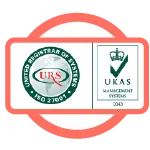- Call Us : +1 (510)-470-1367
- Low Prices
- Large Selection
- Satisfaction Guaranteed
- Secure Shopping

Eye injuries are unfortunately common in the workplace, posing a significant risk to workers across various industries. According to the National Institute for Occupational Safety and Health (NIOSH), approximately 2,000 American workers require medical attention each day due to job-related eye injuries. Fortunately, experts in eye safety unanimously agree that the right eye protection can substantially reduce the frequency and severity of these accidents, potentially preventing up to 90% of them.
Eye injuries can result from a range of hazards, including:
Chemical and Foreign Substance Exposure: Many incidents involve chemicals or foreign substances coming into contact with the eye, leading to irritation or injury.
Corneal Cuts and Scrapes: The cornea, the transparent outer layer of the eye, is vulnerable to cuts and scrapes, often caused by flying debris such as metal chips or contact with abrasive materials.
Grease and Oil Splashes: In workplaces where grease and oil are present, splashes can occur and endanger the eyes.
Radiation Exposure: Workers exposed to ultraviolet or infrared radiation without proper protection are at risk of eye damage.
Certain professionals, such as healthcare personnel, laboratory technicians, and others, face the additional risk of exposure to infectious diseases through their eyes. The eye's mucous membranes can transmit various infections, whether through direct contact with blood splashes, respiratory droplets, or contact with contaminated surfaces.
To safeguard against these risks, safety lenses are essential. Safety lenses differ significantly from typical prescription eyewear, often referred to as "dress eyewear." They must meet rigorous standards for both lens quality and frame durability.
Two primary types of safety glasses are available:
Prescription Safety Glasses: Customized for individuals who require vision correction while ensuring safety.
Non-Prescription Safety Glasses (Plano): Designed for those with no vision correction needs but in need of reliable eye protection.
The impact resistance of safety lenses is paramount. Compared to standard prescription lenses, safety lenses, whether prescription or non-prescription, must meet stringent requirements:
Separate Lens Impact Testing: Lenses, when not in frames, undergo individual impact testing to ensure they can withstand typical workplace hazards.
High Impact Testing: Frames and lenses are assessed together to obtain a high impact rating, ensuring comprehensive protection.
Non-Prescription vs. Prescription Lenses: Non-prescription safety lenses, while often thicker, are structurally less vulnerable than their prescription counterparts when made from the same material.
Safety Testing Procedures
The safety of lenses is determined through rigorous testing methods:
Drop Ball Test: In this test, a lens is dropped from a height of 50 centimeters onto a one-inch diameter steel pipe. To pass, the lens must not break, chip, or shatter.
High-Speed Impact Test: This test involves firing a quarter-inch diameter steel ball at the lens at a velocity of 150 feet per second. The lens must withstand the impact without cracking or dislocating.
Conclusion: Investing in protective medical goggles, whether prescription or non-prescription, is crucial to safeguarding your eyes from workplace hazards. By choosing the right eye protection, you can significantly reduce the risk of eye injuries and ensure a safer working environment for yourself and your colleagues. Don't compromise when it comes to eye safety; choose quality protective eyewear.

